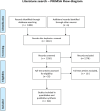The bacterial burden of worn face masks-observational research and literature review
- PMID: 39691656
- PMCID: PMC11649673
- DOI: 10.3389/fpubh.2024.1460981
The bacterial burden of worn face masks-observational research and literature review
Abstract
Introduction: Facemasks were widely mandated during the recent SARS-CoV-2 pandemic. Especially the use by the general population is associated with a higher risk of improper handling of the mask and contamination and potential adverse microbiological consequences.
Methods: We investigated and quantified bacterial accumulation in facemasks used by the general population, using 16S rRNA (Sanger Sequencing), culture and biochemical analysis along with Rose Bengal staining. Additionally, a systematic overview of the literature on face mask contamination was undertaken.
Results: We found an average bacterial load of 4.24 × 104 CFU recovered/mask, with a maximum load of 2.85 × 105 CFU. This maximum is 310 times higher than the limit value for contamination of ventilation system outlet surfaces specified by the German standard VDI 6022. Biochemical and molecular identification predominantly found Staphylococcus species (80%), including Staphylococcus aureus, along with endospore-forming Bacillus spp. Literature reports also indicate contamination of masks by bacterial and fungal opportunists of the genera Acinetobacter, Aspergillus, Alternaria, Bacillus, Cadosporium, Candida, Escherichia, Enterobacter, Enterococcus, Klebsiella (including K. pneumoniae), Micrococcus, Microsporum, Mucor, Pseudomonas, Staphylococcus and Streptococcus. Bacterial counts increase linearly with wearing duration.
Discussion: Prolonged use may affect the skin and respiratory microbiomes, promoting consequential eye, skin, oral and airway conditions. These aspects underscore the urgent need for further research and a risk-benefit analysis in respect of mask use, particularly given their unproven efficacy in disrupting the transmission of respiratory viruses and their adverse social consequences.
Keywords: 16S rRNA gene amplicon sequencing; N95; Rose Bengal staining; adverse effects; bacterial contamination; personal protective equipment; risk; surgical mask.
Copyright © 2024 Kisielinski, Wojtasik, Zalewska, Livermore and Jurczak-Kurek.
Conflict of interest statement
The authors declare that the research was conducted in the absence of any commercial or financial relationships that could be construed as a potential conflict of interest.
Figures





Similar articles
-
Cotton and Surgical Face Masks in Community Settings: Bacterial Contamination and Face Mask Hygiene.Front Med (Lausanne). 2021 Sep 3;8:732047. doi: 10.3389/fmed.2021.732047. eCollection 2021. Front Med (Lausanne). 2021. PMID: 34540873 Free PMC article.
-
Does Wearing a Face Mask During the COVID-19 Pandemic Increase the Incidence of Dermatological Conditions in Health Care Workers? Narrative Literature Review.JMIR Dermatol. 2021 May 6;4(1):e22789. doi: 10.2196/22789. eCollection 2021 Jan-Jun. JMIR Dermatol. 2021. PMID: 34028470 Free PMC article.
-
Physical interventions to interrupt or reduce the spread of respiratory viruses.Cochrane Database Syst Rev. 2020 Nov 20;11(11):CD006207. doi: 10.1002/14651858.CD006207.pub5. Cochrane Database Syst Rev. 2020. Update in: Cochrane Database Syst Rev. 2023 Jan 30;1:CD006207. doi: 10.1002/14651858.CD006207.pub6. PMID: 33215698 Free PMC article. Updated.
-
Disinfection of N95 masks artificially contaminated with SARS-CoV-2 and ESKAPE bacteria using hydrogen peroxide plasma: Impact on the reutilization of disposable devices.Am J Infect Control. 2020 Sep;48(9):1037-1041. doi: 10.1016/j.ajic.2020.06.216. Epub 2020 Jul 6. Am J Infect Control. 2020. PMID: 32645473 Free PMC article.
-
Physio-metabolic and clinical consequences of wearing face masks-Systematic review with meta-analysis and comprehensive evaluation.Front Public Health. 2023 Apr 5;11:1125150. doi: 10.3389/fpubh.2023.1125150. eCollection 2023. Front Public Health. 2023. Retraction in: Front Public Health. 2023 May 25;11:1221666. doi: 10.3389/fpubh.2023.1221666. PMID: 37089476 Free PMC article. Retracted.
Cited by
-
Demonstration of a Home Laundering Method for Cloth Facepieces to Achieve Hygienic and Sustainable Reuse.New Solut. 2025 Aug;35(2):173-187. doi: 10.1177/10482911251334843. Epub 2025 May 8. New Solut. 2025. PMID: 40336319 Free PMC article.
References
-
- Face covering policies during the COVID-19 pandemic, our world in data. (2023). Available at: https://ourworldindata.org/grapher/face-covering-policies-covid (Accessed December 29, 2022).
-
- World Health Organization, U.N.C. Fund (UNICEF) . WHO – Advice on the use of masks for children in the community in the context of COVID-19: annex to the advice on the use of masks in the context of COVID-19, 21 August 2020. (2020). Available at: https://apps.who.int/iris/handle/10665/333919 (Accessed November 7, 2020).
Publication types
MeSH terms
Substances
Associated data
LinkOut - more resources
Full Text Sources
Medical
Miscellaneous

